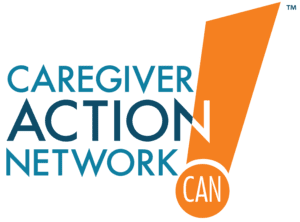Financial Assistance for Caregivers to Cover Caregiving Costs
Financial Assistance for Caregivers to Cover Caregiving Costs

Written by Julie B. Kennedy, CEO & Co-Founder, RubyWell
- You may have access to up to 12 weeks of paid family medical leave through your employer or your state.
- The person you care for may be able to receive a portion of their life insurance death benefit while they’re still alive.
- Caregiving grants are offered by government agencies, non-profit organizations, and private foundations.
- Certain Medicare benefits can help cover caregiving costs.
Does anyone ever lose the thrill of finding a $20 bill crumpled up in the pocket of a pair of freshly laundered jeans? Or getting a surprisingly generous tax refund? No. Found money is always a cause for celebration. And for many family caregivers, it can make the difference between paying all the bills or falling behind. On average, family caregivers spend $7,200/year out of pocket providing care. And nearly 40% if you have to leave your jobs in order to provide that care.
The good news is that there’s money out there earmarked for family caregivers like you and the older family members you care for. In this article, you’ll learn where you can find it and how you can put it to work to help cover the costs of caring. Four places this money may be hiding are:
- Paid family leave
- Life insurance policies
- Medicare
- Grants
Financial Assistance Through Paid Family Leave
You’re probably aware of the Family Medical Leave Act (FMLA). It’s a federal law that may protect your job and health insurance for up to 12 weeks per year while you take time off to care for a family member with a serious health condition.
All public employers and private employers who employ at least 50 workers are required to offer FMLA to their employees who have been employed there for at least a year and worked at least 1,250 hours during the 12 months prior to the start of leave. The only down-side to FMLA is that the leave is unpaid.
State-sponsored Paid Family Leave
Happily, FMLA allows states to expand on the federal law. And some states have, offering up to 12 weeks of Paid Family and Medical Leave (PFML) to many residents. The benefit amount you can receive while on PFML varies by state and your work circumstances.
Currently 11 states plus Washington, D.C. offer PFML, with four more states enacting PFML laws in 2026. You can learn about your state’s family leave laws on RubyWell’s Family Leave Finder.
Employer-sponsored Paid Family Leave
Just under 30% of employers in America offer paid family leave as an employee benefit, whether or not the state you live in offers PFML.
If you’re lucky enough to work for one of these employers, ask your HR department if there’s a paid family leave benefit that you can take advantage of. The employer benefit may be more generous than the state PFML that may be available to you, or exactly the same. And some employers may offer supplemental coverage to bridge the gap between state benefits and full salary replacement. So make sure you understand all of your PFML options before making any decisions.
Finding Money in Life Insurance Policies
A lot of people assume that a life insurance benefit can only be claimed after the policy holder passes away. But sometimes there are ways to access part of that benefit early. If the person you care for owns a life insurance policy, they may be able to find some money there to help cover their care costs.
Accelerated Death Benefit
 Some life insurance policies offer an accelerated death benefit if the policy holder has been diagnosed with a terminal illness. If this describes your loved one’s circumstance, they may be able to access a portion of their death benefit while they’re still alive. And they can use the proceeds any way they please, including to pay for prescriptions, healthcare, utilities, groceries, a professional caregiver, or a family caregiver (like you).
Some life insurance policies offer an accelerated death benefit if the policy holder has been diagnosed with a terminal illness. If this describes your loved one’s circumstance, they may be able to access a portion of their death benefit while they’re still alive. And they can use the proceeds any way they please, including to pay for prescriptions, healthcare, utilities, groceries, a professional caregiver, or a family caregiver (like you).
One thing to keep in mind is that any money that your loved one receives through the accelerated death benefit will no longer be available in the final death benefit. For example, if their policy’s original death benefit was $100,000, and they claim $50,000 as an accelerated death benefit, their beneficiaries will split the remaining $50,000 upon your loved one’s passing.
Selling a Life Insurance Policy
Not all insurance policies offer the accelerated death benefit. But the family member you care for may be able to sell their policy via a viatical settlement or life settlement. I’ll explain both of these in a moment. But in return for selling their policy, they would receive a portion of the value of the death benefit and forfeit the rest entirely. This puts money in their pockets immediately and turns their policy into an investment vehicle for the buyer.
A viatical settlement could be an option if your family member has been diagnosed with a terminal illness, and has a short life expectancy.
Viatical settlements tend to provide a larger payout than life settlements, because the buyer would receive the death benefit sooner, and therefore have to make fewer premium payments on the policy after they buy it. So their return on their investment would be higher. If your family member is fairly healthy and has a longer life expectancy, they could choose to sell their policy through a life settlement.
Again, the person you care for can use the proceeds from the sale any way they see fit, including covering their care costs while they’re still alive.
The drawback to viatical settlements and life settlements is that your loved one’s beneficiaries won’t receive any of the death benefit after your loved one passes. It’s also wise to talk with an accountant before proceeding down this path, so you can understand any tax implications.
Financial Assistance Through Medicare
 If you care for an aging family member, you’re probably familiar with Medicare—the government sponsored health insurance for adults who are over 65 or have certain health conditions. What you may not know is that the person you care for may be able to access some Medicare benefits that can help cover caregiving costs.
If you care for an aging family member, you’re probably familiar with Medicare—the government sponsored health insurance for adults who are over 65 or have certain health conditions. What you may not know is that the person you care for may be able to access some Medicare benefits that can help cover caregiving costs.
First, you need to know what kind of Medicare coverage your family member has: Original Medicare (Parts A and B) or a Medicare Advantage plan (Part C). A look at their Medicare card will give you your answer.
If the card just says Medicare Health Insurance, they have Original Medicare.
Medicare Advantage (MA) plans are offered by private insurance companies, like United Healthcare, Humana, Aetna, Cigna, etc. If your family member’s Medicare card also has the name of a private insurance company on it, they have a Medicare Advantage plan.
Now that you know that, let’s first look at the benefit available for family caregivers of someone enrolled in Original Medicare. Then we’ll look at some valuable Medicare Advantage benefits.
Medicare GUIDE Program Respite Care Benefit
The Centers for Medicare & Medicaid Services (CMS) launched a new care model this year for adults covered by Original Medicare who have dementia. It’s called “Guiding an Improved Dementia Experience” or simply “the GUIDE model.” One of the benefits offered by GUIDE is up to $2,500 per year for respite services for qualified beneficiaries. Here’s how you may access it:
- Ask your family member’s primary care provider or the provider organization (eg: physician group practice or health system) if they participate as a GUIDE provider. Or, contact their Medicare plan directly (the phone number is on their Medicare card) to ask if any of the plan’s contracted providers in your area participate as GUIDE providers.
- Tell your family member’s GUIDE care provider that you’d like to take advantage of the GUIDE Respite Care Benefit. The provider will then authorize and help arrange the approved respite care services based on your family member’s care plan.
Medicare Advantage Supplemental Benefits
Insurance companies can contract with Medicare to offer Medicare Advantage (MA) plans. And they receive financial incentives to deliver high-quality care and proactively manage their members’ health to avoid unnecessary care services.
One of the ways they promote better health is by providing “supplemental benefits.” These are benefits that go above and beyond Original Medicare part A and B benefits. They may include dental, vision, and mental health coverage. So that’s some big savings right there. But wait, there’s more.
Depending on the MA plan, supplemental benefits could include:
- An over-the-counter benefit that includes a debit card loaded with up to $215/month that you can spend on healthy food, over-the-counter meds, personal care products, transportation, utilities, pet supplies, and rent/mortgage assistance
- A $150 annual allowance to purchase certain approved home safety devices
- A personal emergency response system, at no cost to you
Each MA plan’s supplemental benefit offering is unique. And it can be hard for families to wade through thick brochures and confusing explanations to figure out what’s available. As a result, they leave a lot of these benefits—and this money—on the table.
RubyWell is currently developing a tool that will make it easy for family caregivers to view and understand their loved one’s MA supplemental benefits. Until that launches, it’s worth it to take the time to learn about every supplemental benefit your family member’s plan offers.
Financial Assistance through Caregiver Grants
My favorite thing about grants is that they provide “free money.” It comes from an outside source and you never have to pay it back. There are caregiver grants out there that aim to alleviate the financial burden and stress associated with caring for an aging family member. They typically range in value from a few hundred to thousands of dollars.
Each grant has its own eligibility criteria. For example, the person you care for must require a certain level of care or experience a certain level of impairment. Your loved one’s access to other support services or long-term care programs may be a deciding factor. Or there may be income limits for the family caregiver.
Often the scope of the grant will dictate what the money can be used for. Some grants cover the cost of respite care. Some pay for certain home modifications, medical equipment, or other specific health expenses.
Where to Look for Caregiver Grants
Another great thing about caregiver grants is that they’re offered by government agencies, non-profit organizations, and private foundations. So there can be quite a few of them out there. But that also means there are a lot of places to look for the grant that suits your needs.
A great place to start is the Eldercare Locator, which is a fantastic tool developed and maintained by the Administration for Community Living (ACL).Here’s how you use it:
- Go to the Eldercare Locator.
- Enter your zip code to find a list of resources available in your area.
- Contact everyone on that list to ask if they provide caregiving grants or can direct you to a local organization that does.
Your local Area Agency on Aging will likely be at the top of that list. In addition to possibly having grant information, they may even be able to help you prepare your grant application(s). If so, take them up on it. Preparing a grant can be a complicated and tedious process.
If your family member has a chronic condition that requires in-home care, consider joining a support group for families dealing with that condition to ask about any grant information they may be able to share. Or reach out to an organization supporting people with that condition to ask if they can recommend any disease-specific grants.
The Department of Veterans Affairs (VA) offers a Temporary Residence Adaptation (TRA) grant for retired service members with service-connected disabilities, who live in their family caregiver’s home. This grant of up to $47,130 can be used to pay for home modifications including ramps and grab bars, widening doorways, and installing accessible bathroom fixtures.
Hilarity for Charity, has a grant program that provides 3-6 months of free, professional, in-home care for people caring for aging family members with Alzheimer’s disease or other dementias.
You can also reach out to your family member’s doctor’s office to ask if someone there can refer you to grants that could help support your loved one’s care.
Additional Support for Family Caregivers
There are many resources & services that provide support to family caregivers. And a number of government benefits that some aging adults can take advantage of to lower their monthly expenses. But often family caregivers don’t have the time to track down the support they need.
If this is true for you, consider enlisting the help of a friend or family member who’s unable or unwilling to do the day-to-day work of caregiving but wants to help in some way. The gift of their time can be as valuable as any wad of found money you’re lucky enough to come across.



